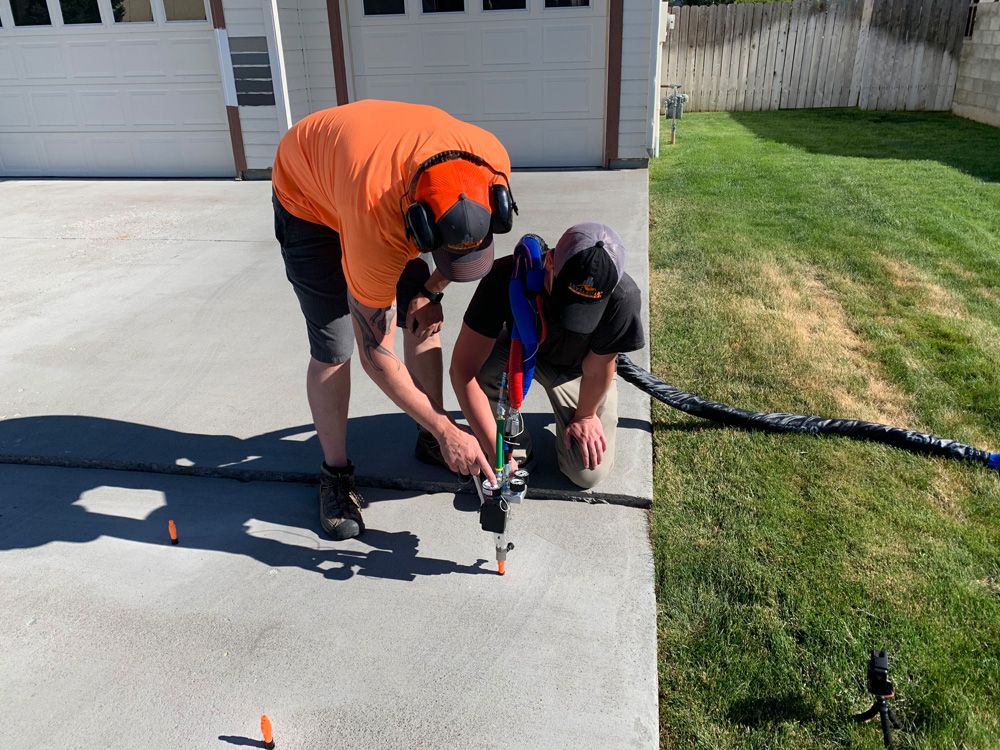FAQ
WHY SHOULD I RAISE CONCRETE RATHER THAN REPLACE IT?
When compared to concrete replacement, the process of raising concrete with polyurethane foam is inexpensive and exponentially faster than replacing it. Repaired areas are ready within 30 minutes to be utilized, as they were intended. Polyurethane's ease of material process and clean-up are some distinct advantages over traditional mudjacking with grout.
-
How Do You Control the Strength of Concrete?
The ratio of water to cement is the highest determining factor in the strength of the concrete. The more water, the further spacing there will be between the cement and the hydration products. It is to be noted that the workability of the cement will also be affected by such measurements. Therefore, it is crucial to have the proper balance depending on the application you are employing.
-
What Is Proper Concrete Curing, and Why Is It Important?
The importance of curing concrete is a determining factor in the overall strength and durability of your concrete surfaces and structures. The hydration of concrete occurs when there is a reaction between the cement water while being kept at an ideal temperature. By keeping the concrete moist during this period, it will ensure proper hydration and a solid form.
-
What Is a Concrete Sealer, and How Is It Applied?
The application of a concrete sealer is put in place to protect it from damage and staining. By creating an impermeable layer on the surface of your concrete, it will last longer and be much easier to maintain. Two types of sealers exist: topical and penetrating. As the names suggest, topical sealers adhere to the surface of the existing cement providing a visual enhancement while penetrating sealers use a chemical reaction to penetrate the surface.
-
How Are the Different Strengths of Concrete Produced?
Many factors can affect the strength of your concrete, even after it has been mixed. Pores are holes in the concrete that can be filled with air or water. The more porous the concrete, the less strength it will have, therefore the water to cement ratio is an important key factor when contemplating the strength of your concrete.
Other factors, such as the soundness of the aggregates, cement composition, and grinding of cement, all have an impact on the structural integrity of your concrete.
-
Do Concrete Cracks Indicate a Structural Problem?
It all depends on the severity and thickness of the cracks. At times, these can be an aesthetic issue that can easily be repaired with bonding agents to prevent the crack from getting larger. It is important to have any damaged concrete looked at by a professional to assess the problem and take care of it immediately, as it can indicate that the slab needs stabilized. Slab stabilization is often required when slabs lack support, but may or may not be settled. Slabs can crack when loads exceeding its capacity are applied.
-
Does Concrete Need Ongoing Maintenance?
Maintaining your concrete will lengthen its lifespan significantly and require very little work to do so. Preventative measures can be taken to fix surface problems such as crack filling, patchwork, pressure washing, and protective coatings. Over time concrete can settle or develop voids. Voids under slabs are often present in areas where wash out or excessive settling have occurred. This material will weigh on average 15-25 times less than a traditional mudjacking or cementitious grout mix, applying less stress on an already failed subgrade.
-
Will Concrete Crack?
When concrete is installed properly, it is one of the most durable and long-lasting products. In order to prevent cracking prematurely, it is crucial to have professionals who will follow precise guidelines every step of the way. Due to weather conditions and movement of the soil around your property, it is possible over time that cracks will appear. With Leveled Up Concrete Inc., these issues can be easily repaired.




